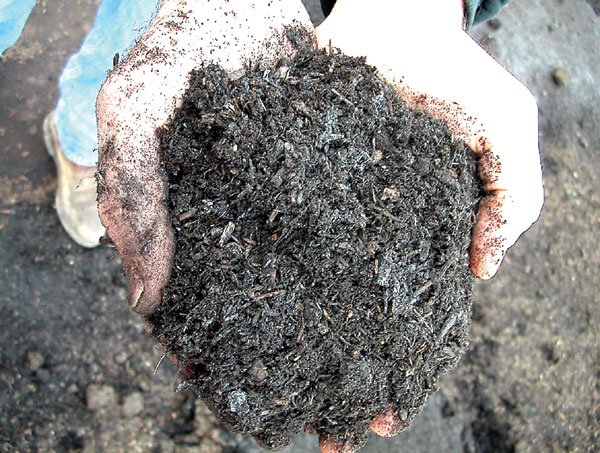Rather than surrender your compost pile until the spring, you
can keep it going with a little soggy TLC, according to
experts.
Winter rains, large debris and cooler weather are all enemies of
the gardener’s pile, but with a pitchfork and some initiative, you
can circumvent most of them.
Rather than surrender your compost pile until the spring, you can keep it going with a little soggy TLC, according to experts.
Winter rains, large debris and cooler weather are all enemies of the gardener’s pile, but with a pitchfork and some initiative, you can circumvent most of them.
During the winter, the number of garden clippings and cooking scraps you throw out in a week will likely decline, leaving you with mainly plant material from the yard.
Unfortunately, in wet weather, leaves and grass tend to stick to one another, sealing together like thick muck.
Not only do they create a hardened mound, but they also bring compost production to a halt because they compress and block out oxygen.
“The main thing is to keep your compost oxygenated,” said Greg Ryan, general manager of Z-Best Products on Highway 25.
The company produces and sells compost, including much of the supply at local nurseries. “A pitchfork or a shovel should do it. Keep turning the piles over because you want to keep fresh air circulating.”
Ryan also suggests mixing in some more woody or bulky material to help maintain the piles’ air circulation.Some good examples include straw, twigs and small-cut branches.
As a rule of thumb, branches should be cut down as much as possible since large sticks will not decompose fast enough to allow compost to be useable without the need to pick them out of the pile.
If finding enough material to keep your compost pile going is the difficulty, get creative, advises Mike Wollbrinck, assistant manager of U-Save Rockery in Morgan Hill.
“A lot of stores throw away their spoiled or overripe produce,” said Wollbrinck. “Go talk to the produce manager and see if you can leave a bucket there.”
Another option, provided they don’t have a pile of their own, is to ask neighbors whether they would like to help you collect kitchen scraps and other self-recycle items.
To avoid oversaturation during the soggier months, remember to cover your compost pile during the days or nights when rain is forecast.
If too much water gets into the pile it will force out the oxygen and stall compost breakdown, said Ryan. He should know, too.
Z-Best’s compost production facility covers 77 acres and produces more than 100,000 tons of the natural fertilizer per year.
“It’s not rocket science,” said Ryan. “Properly cared for, nature will do the work for you.”
GARDENING TIP
Don’t wait until spring to spread your compost, said Mike Wollbrinck, assistant manager of U-Save Rockery in Morgan Hill. Instead, put down compost or a thick layer of mulch now. If you leave it on top of the soil, it will help keep weeds down, and tilling it into the soil later will be a one-step job. Finished compost should have a soil-like consistency.














